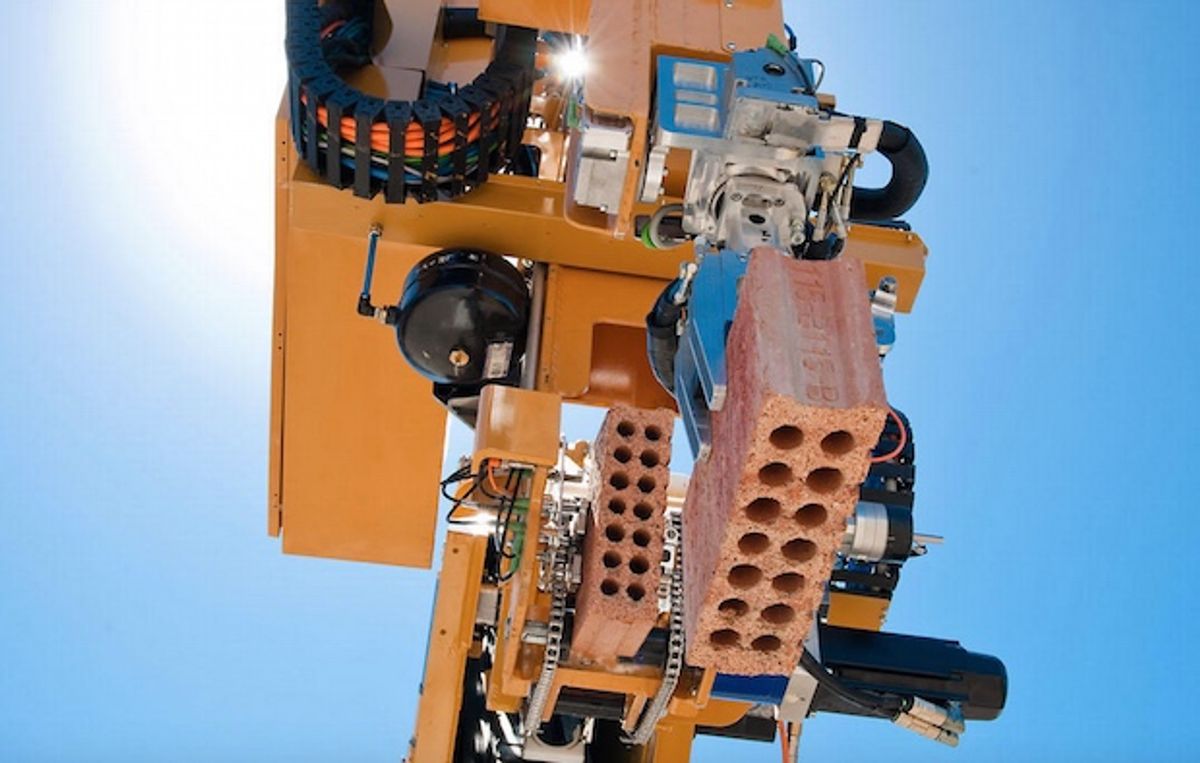It’s expensive to make things. Making food, making furniture, making electronics, making cars… It’s all a lot of time consuming labor requiring a variety of skilled and semi-skilled labor. Industrial robots have been very successful at taking over some of the semi-skilled stuff in structured environments like factories, but other than in a few art projects, it’s relatively new to see industrial arms doing productive things out in the world, like laying bricks.
Fastbrick Robotics has been working for about a decade to refine the bricklaying robot that you can sort-of-but-not-really see in the above pic. This animation gives a much better sense of how it works:
As long as you keep feeding it bricks, it can work continuously, placing 1,000 bricks an hour based on a CAD drawing. This works out to the shell of a new house every two or three days, complete with channels for plumbing and electrical. The whole system is mobile (although it relies on external localization), meaning that you can use it pretty much anywhere. And with a development cost of just $7 million, it might actually be commercially viable.
A different system that has been used successfully for autonomous construction is a “concrete jet,” which is sort of like a giant 3D printing gantry that can make walls. Here’s an ancient (2008) animation showing a small prototype and how it could be scaled up:
Called Contour Crafting, this fabrication technology was developed at the University of Southern California, and its creators estimate that construction using this system could reduce costs by 80 percent (!) while eliminating waste. It could potentially complete the structure of a 2,000 square foot (185 square meters) house in under 24 hours. And next, the moon!
In both of these cases, we’re very far from robots printing out finished houses. It’s nice that the robots are able to account (sometimes) for the space necessary for wires and pipes and stuff like that, but actually putting that infrastructure in place is still a task that requires a skilled human. What the robots are able to do is what robots are best at: time consuming, repetitive jobs that require heavy lifting and precision but little else.
It’s certainly possible (even likely) that construction robots will be able to do everything at some point in the future, but until then, construction still needs plenty of humans. Having said that, the number of humans who are learning skills like bricklaying appears to be decreasing significantly, so in the long term, rather than thinking of robots like this as taking jobs away from people, think of them as filling in for people as the human-driven construction workforce shrinks.
[ Fastbrick Robotics ] via [ Perth Now ]
[ Contour Crafting ]
Evan Ackerman is a senior editor at IEEE Spectrum. Since 2007, he has written over 6,000 articles on robotics and technology. He has a degree in Martian geology and is excellent at playing bagpipes.



